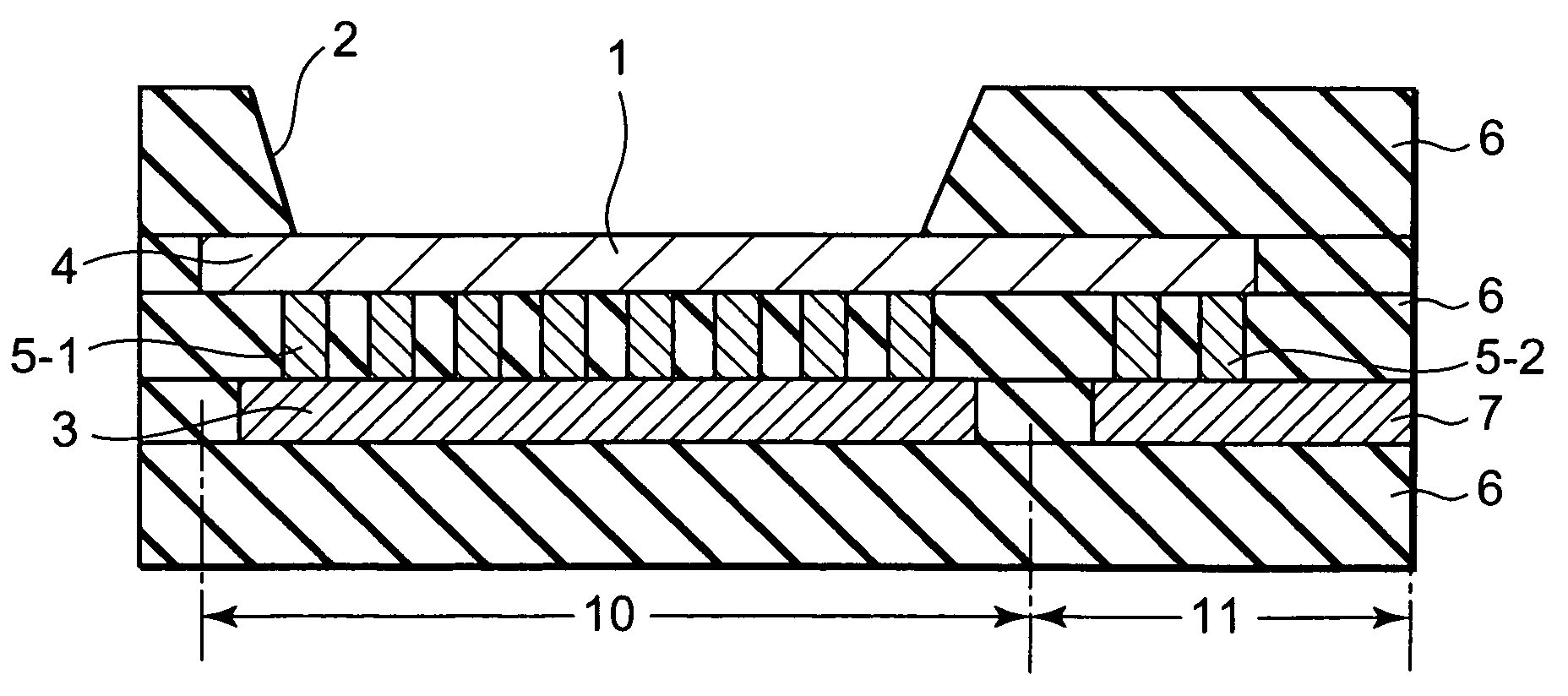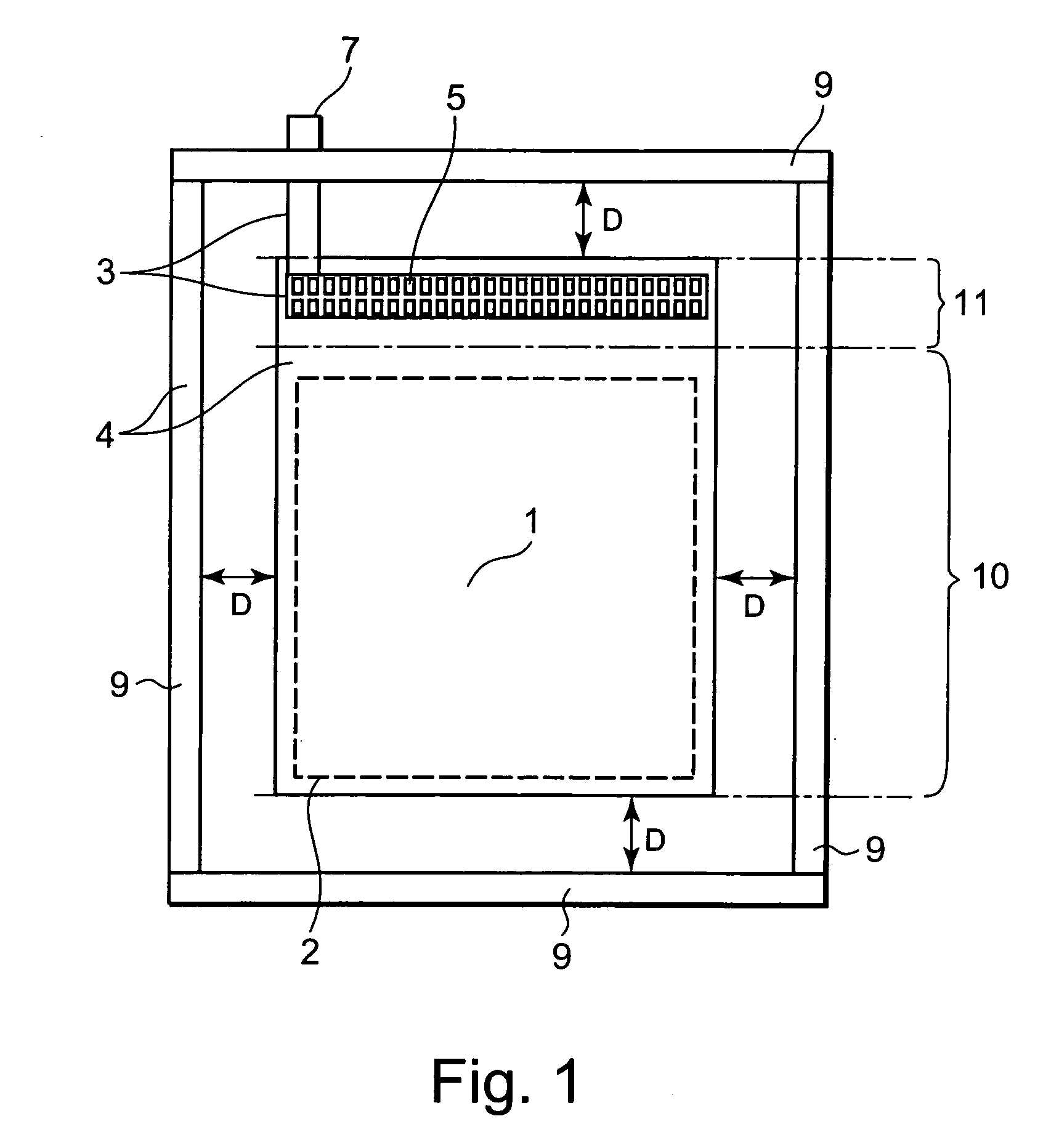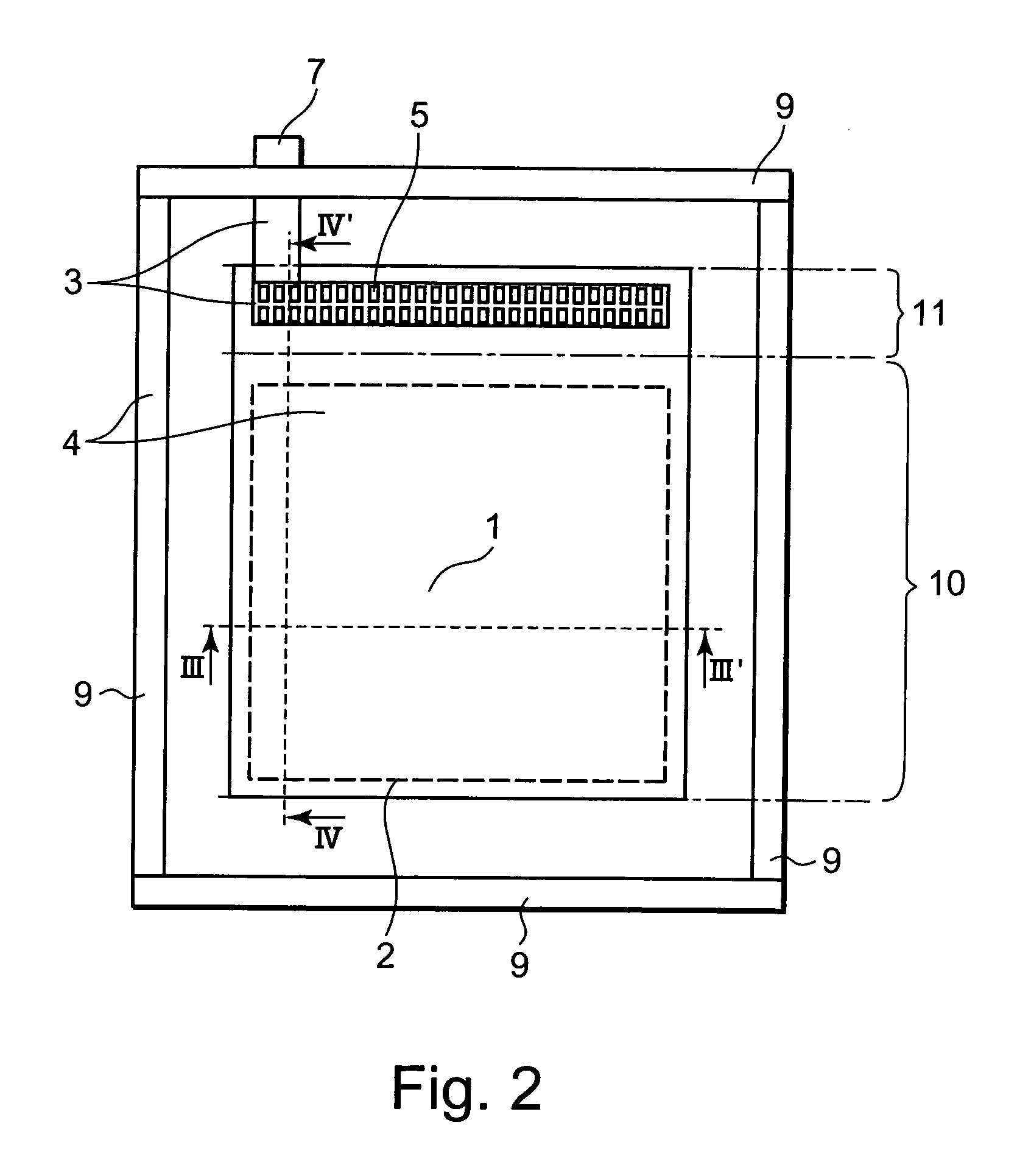Semiconductor integrated circuit
- Summary
- Abstract
- Description
- Claims
- Application Information
AI Technical Summary
Benefits of technology
Problems solved by technology
Method used
Image
Examples
first exemplary embodiments
[0065]The first exemplary embodiments of this invention will be described in detail with reference to FIGS. 12 to 19D. In each embodiment, a conductive pattern / patterns is / are disposed between a bonding pad and an internal circuit connecting interconnection, and the conductive pattern / patterns and the bonding pad are connected to each other through leading interconnections. FIG. 12 is a plan view of a bonding pad portion in which leading interconnections are provided at two positions between a bonding pad and conductive patterns. FIG. 13A is a plan view for explaining an impact on bonding at the related bonding pad portion and FIG. 13B is a perspective view showing a section taken along line B-B′ in FIG. 13A. FIG. 14A is a plan view for explaining an impact on bonding at a bonding pad portion of this invention, FIG. 14B is a perspective view showing a section taken along line B-B′ in FIG. 14A, and FIG. 14C is a sectional view taken along line C-C′ in FIG. 14A. FIGS. 15A, 16A, . . . ...
second exemplary embodiments
[0078]The second exemplary embodiments of this invention will be described in detail with reference to FIGS. 20 to 28D. In each embodiment, conductive patterns are applied to capacitance pad interconnections of a terminal capacitance provided in a bonding pad region. FIG. 20 is a plan view of a bonding pad portion in which pillar-shaped leading interconnections connected to conductive patterns, respectively, are provided at two positions along each of three sides of a bonding pad. FIG. 21A is a plan view of a bonding pad portion in which pillar-shaped leading interconnections are provided at three positions along each of three sides of a bonding pad, and FIGS. 21B and 21C are sectional views taken along line B-B′ and line C-C′ in FIG. 21A, respectively. FIGS. 22A, 23A, . . . , and 28A are plan views of various bonding pad portions in each of which pillar-shaped leading interconnections are provided at positions along each of three sides of a bonding pad. FIGS. 22B, 23B, . . . , and ...
PUM
 Login to View More
Login to View More Abstract
Description
Claims
Application Information
 Login to View More
Login to View More - Generate Ideas
- Intellectual Property
- Life Sciences
- Materials
- Tech Scout
- Unparalleled Data Quality
- Higher Quality Content
- 60% Fewer Hallucinations
Browse by: Latest US Patents, China's latest patents, Technical Efficacy Thesaurus, Application Domain, Technology Topic, Popular Technical Reports.
© 2025 PatSnap. All rights reserved.Legal|Privacy policy|Modern Slavery Act Transparency Statement|Sitemap|About US| Contact US: help@patsnap.com



